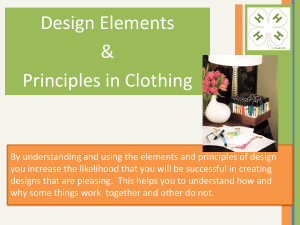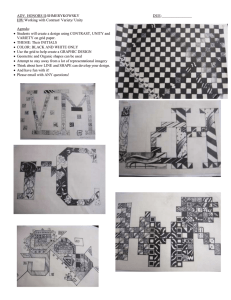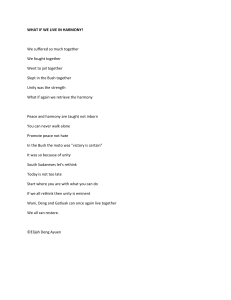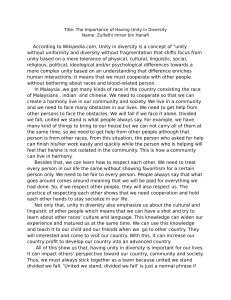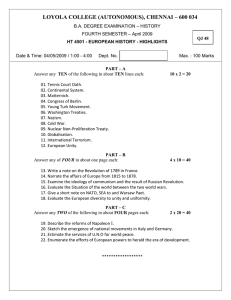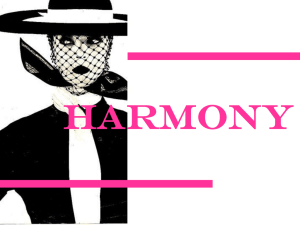UNITY
advertisement
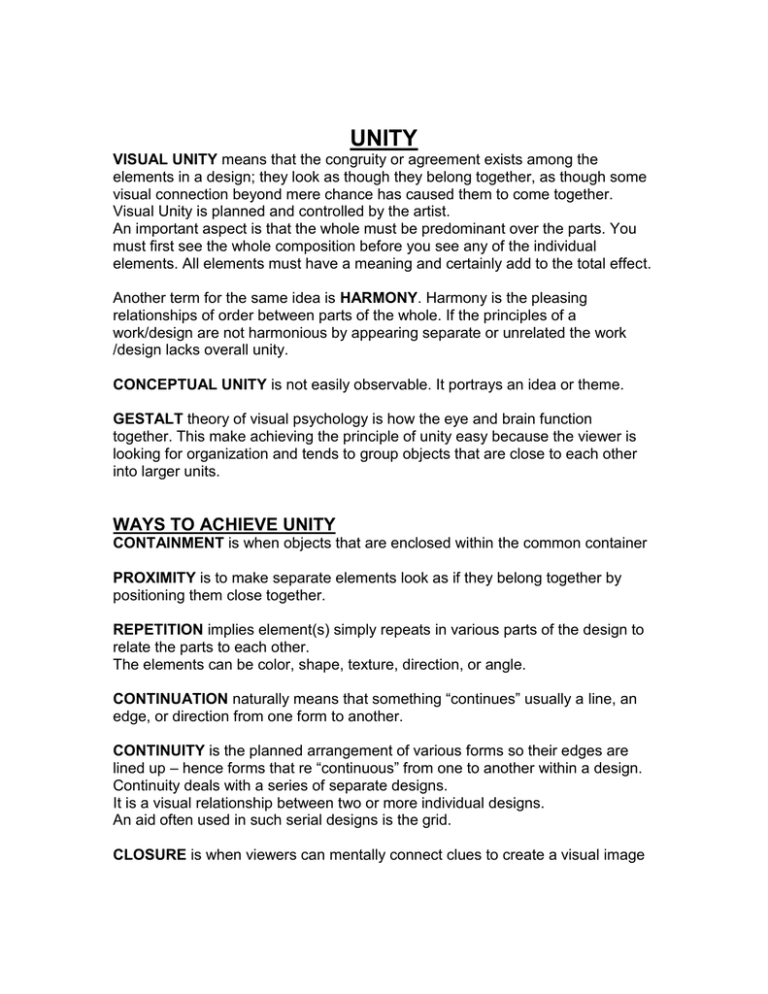
UNITY VISUAL UNITY means that the congruity or agreement exists among the elements in a design; they look as though they belong together, as though some visual connection beyond mere chance has caused them to come together. Visual Unity is planned and controlled by the artist. An important aspect is that the whole must be predominant over the parts. You must first see the whole composition before you see any of the individual elements. All elements must have a meaning and certainly add to the total effect. Another term for the same idea is HARMONY. Harmony is the pleasing relationships of order between parts of the whole. If the principles of a work/design are not harmonious by appearing separate or unrelated the work /design lacks overall unity. CONCEPTUAL UNITY is not easily observable. It portrays an idea or theme. GESTALT theory of visual psychology is how the eye and brain function together. This make achieving the principle of unity easy because the viewer is looking for organization and tends to group objects that are close to each other into larger units. WAYS TO ACHIEVE UNITY CONTAINMENT is when objects that are enclosed within the common container PROXIMITY is to make separate elements look as if they belong together by positioning them close together. REPETITION implies element(s) simply repeats in various parts of the design to relate the parts to each other. The elements can be color, shape, texture, direction, or angle. CONTINUATION naturally means that something “continues” usually a line, an edge, or direction from one form to another. CONTINUITY is the planned arrangement of various forms so their edges are lined up – hence forms that re “continuous” from one to another within a design. Continuity deals with a series of separate designs. It is a visual relationship between two or more individual designs. An aid often used in such serial designs is the grid. CLOSURE is when viewers can mentally connect clues to create a visual image
